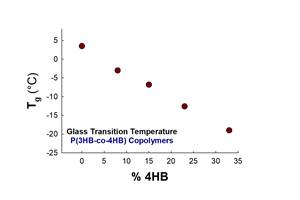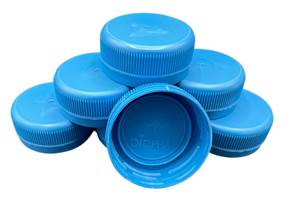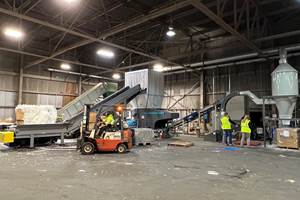Extrusion Technology Extended to Injection, Enabling Up to 100% Regrind Usage
Twin-barrel (shot-pot) press can handle more regrind, offers other benefits to molders.
Two barrels could be better than one when it comes to running regrind material, according to screw design expert Robert Dray of the eponymous
Dray is currently seeking U.S. and global patents on a system he’s dubbed the injection regrind machine (IRM), which borrows from a concept long deployed in extrusion. Namely, the use of a “shot pot” or secondary screw and barrel designed to melt up to 100% regrind material in a two-stage process. Instead of a standard reciprocating screw within a barrel preparing and injection melt, the IRM features the shot pot with a plunger.
“Every shot pot has a plunger and then an extruder off to side,” Dray explains. Material is melted by the extruder and then enters the pot before being injected into the mold. The system requires adding another screw and barrel alongside the machine’s existing barrel, with single or double venting added to remove all volatiles and moisture. In the first inlet, reinforcing materials such as glass fibers can be added to improve physical properties.
“We’ve been doing it in extrusion for 20 years,” Dray explains. “It’s really not new in extrusion, but it is new in injection molding.” Dray says that for the past 25 years, extruders have used his company’s patented screw designs for extruding 100% flake regrind into mostly sheet.
In addition to being able to run lots consisting of 100% regrind, with no theoretical limitation on shot size, Dray says the IRM would also enable injection molders to process finished parts at a lower price and higher quality, including the possibility of blending in off-spec material. Dray also estimates that by cutting out the compounding step and eliminating pelletizing, approximately 30 cents/lb savings can be achieved. Not currently partnering with any machinery OEMs, R. Dray is currently licensing the technology and customizing orders based on what the molder has on hand, including building extruders to spec to add to the press and turn it into a shot-pot IRM machine.
Customizable, the shot-size range for the IRM will be the same as current, standard injection molding machines, with the L/D ratio for the screw ranging anywhere from 24 to 36 and the screw’s diameter determined by the overall rate requirements for the system. The injection speed and pressure possible from the plunger are determined by the process’s pack-and-hold requirements.
Speaking more on process pressure, Dray says that in most cases the IRM has the same levels as standard injection molding. Where it differs, however, is it will not lead to overpacking of parts, which wastes material. Dray says overpacking is often the result of the large screws currently standard on OEM machines, which he says cannot properly control the pack-and-hold phase of the injection molding process.
The IRM, in contrast, has a small diameter, hydraulically controlled plunger that can accurately control pack and hold, thereby enabling molders to create parts with the desired shot weight. As an example of the potential waste caused by overpacking, Dray offers up a trial completed by a cap molder applying the new system. Using a 65-mm screw and valve of R. Dray’s design, the customer saved an average of 0.04 g of material per bottle cap. When you consider that this company molds 14 billion bottle caps annually, those resin savings equate to 1,234,589 lbs of raw material saved per year. Assuming a resin price of 60 cents/lb, potential annual savings come out to $740,753 per year.
The IRM patent enables the small plunger to control pack and hold, which can compensate for material shrinkage in the mold. “That is why our small diameter plunger still provides the required pressure,” Dray says. In the IRM’s design, a smaller plunger, which is controlled hydraulically to manage pack and hold, rests inside a larger plunger.
Based on the company’s extruder screw designs, which consist of three patents in the single and double-vented configuration, the IRM Technology can be retrofitted into existing injection molding machines or built into new ones.

R. Dray’s injection regrind machine (IRM) uses technology deployed in extrusion to help injection molders process more regrind material. Source: R. Dray
Related Content
Multilayer Solutions to Challenges in Blow Molding with PCR
For extrusion blow molders, challenges of price and availability of postconsumer recycled resins can be addressed with a variety of multilayer technologies, which also offer solutions to issues with color, processability, mechanical properties and chemical migration in PCR materials.
Read MoreFilm Extrusion: Boost Mechanical Properties and Rate of Composting by Blending Amorphous PHA into PLA
A unique amorphous PHA has been shown to enhance the mechanical performance and accelerate the biodegradation of other compostable polymers PLA in blown film.
Read MorePHA Compound Molded into “World’s First” Biodegradable Bottle Closures
Beyond Plastic and partners have created a certified biodegradable PHA compound that can be injection molded into 38-mm closures in a sub 6-second cycle from a multicavity hot runner tool.
Read MorePurpose-Built System Enhances Capacity and Flexibility for Recycler
A Boston recycler invested in a turnkey shredding, granulation and elutriation system to expand its plastics reclaim ´óĎó´«Ă˝.
Read MoreRead Next
New Injection Screw Is Said to Be Truly ‘All-Purpose’
A mixing section with removable dams can adjust melting capability to the viscosity of the material.
Read More‘All-Purpose’ Screw for Injection Molding Handles a Wide Range of Polymers
A mixing section with replaceable dams is said to remedy the limitations of so-called “general-purpose” injection screws.
Read MoreClose-Up On Technology - Interchangeable Dam Adds Versatility to Screw
A new barrier screw has removable keys to change the dam height, allowing the screw to be tuned for highest throughput with resins as different as LLDPE and nylon, says the screw’s designer, Robert Dray, president of R.
Read More













